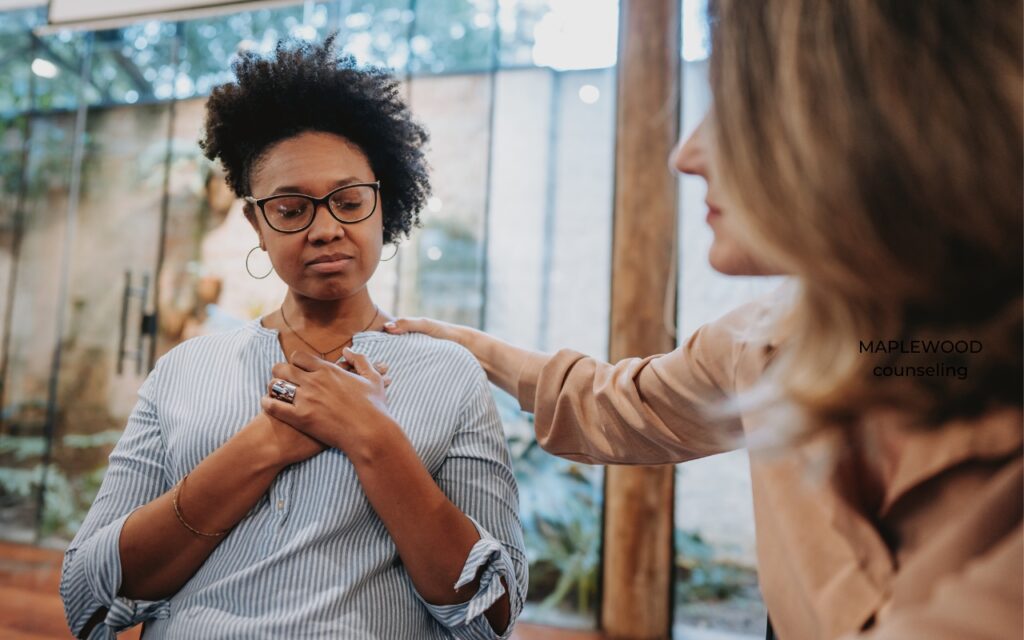
8 Main Reasons for Feeling Insecure in a Relationship
8 Main Reasons for Feeling Insecure in a Relationship
Discover the Hidden Roots of Relationship Insecurities and How to Overcome Them
Causes for Feeling Insecure in a Relationship
Discover the Hidden Roots of Relationship Insecurities and How to Overcome Them
Insecurities are a common challenge in relationships. Many people face them, but few openly discuss them. It’s time to shed light on this topic and provide practical solutions for those seeking a healthier, more fulfilling partnership.
Definition of Insecurity in a Relationship
Insecurity in a relationship refers to doubts and fears about your partner’s feelings and the stability of the relationship. These insecurities can range from mild concerns to debilitating fears, significantly impacting your connection with your significant other. It’s essential to differentiate between normal worries and unhealthy behaviors that stem from deep-seated insecurities.
Main Reasons for Feeling Insecure
Lack of Communication and Trust
Without open communication, misunderstandings and assumptions can breed insecurity. When trust is compromised, even unintentionally, it can lead to doubts and fears about your partner’s commitment.
Case Study
A couple experienced growing distance due to one partner’s long work hours. The other partner began feeling unimportant and neglected, leading to insecurities. By addressing this lack of communication, they rebuilt trust and strengthened their bond.
Comparison to Past Relationships or Other Couples
Constantly comparing your relationship to past ones or to others can create unrealistic expectations and dissatisfaction. Every relationship is unique, and these comparisons can undermine your current partnership’s strengths.
Case Study
A partner compared their relationship to seemingly perfect ones on social media, leading to self-doubt and jealousy. Through discussion, they realized the unrealistic nature of these comparisons and focused on their unique journey, reducing insecurities.
Fear of Abandonment or Rejection
Past experiences or personal fears can make you worry about being abandoned or rejected. This fear can manifest as clinginess or excessive need for reassurance, straining the relationship.
Case Study
A spouse with a history of unstable relationships feared their current partner would leave. They sought therapy to address past traumas, learning to trust and communicate their fears. Over time, this work strengthened their relationship.
Unequal Effort in the Relationship
When one partner feels they are putting in more effort than the other, it can lead to resentment and insecurity. Balance in effort and commitment is crucial for a healthy relationship.
Personal Insecurities and Low Self-Esteem
Individual insecurities about appearance, intelligence, or worthiness can spill over into the relationship, causing doubt and fear about being loved and valued.
Impact of Social Media and External Influences
Social media often portrays an idealized version of reality, leading to comparisons and insecurities. External influences, such as friends or family, can also impact how secure you feel in your relationship.
Case Study
A couple experienced increased insecurities due to frequent social media use. They implemented “tech-free” evenings to focus on each other, improving communication and decreasing feelings of inadequacy.
Unresolved Conflicts or Past Hurts
Unresolved issues from the past can resurface, causing insecurities. It’s essential to address and resolve conflicts to prevent them from festering and affecting the relationship.
Misinterpretation of Partner’s Actions or Words
Misunderstanding or misinterpreting your partner’s actions or words can lead to unnecessary insecurity. Clear and open communication is key to preventing these misunderstandings.
Effects of Insecurity on Relationships
Deterioration of Trust and Intimacy
Insecurity can erode trust and intimacy, creating a cycle of doubt and distance between partners. Rebuilding trust takes time and consistent effort from both individuals.
Increased Conflict and Distrust
Constant insecurity can lead to frequent arguments and a lack of trust. This can create a toxic environment, making it challenging to resolve issues and move forward.
Emotional and Mental Stress on Both Partners
Insecurity places immense emotional and mental strain on both partners. It can lead to anxiety, depression, and a general sense of dissatisfaction in the relationship.
Hindrance to Personal and Relationship Growth
When insecurities dominate a relationship, both personal and relationship growth suffer. Addressing insecurities allows for a healthier, more fulfilling partnership.
How to Overcome Insecurities
Open Communication and Building Trust
Establish a safe space for both partners to express their feelings and fears without judgment. Consistent, honest communication is the foundation of trust.
Addressing Personal Insecurities and Self-Esteem
Encourage self-awareness and self-acceptance. Seek professional help if necessary to work on personal insecurities and boost self-esteem.
Setting Healthy Boundaries
Establish and respect boundaries within the relationship. This helps both partners feel secure and respected.
Seeking Professional Help if Needed
Therapists and counselors can provide valuable tools and insights to help overcome insecurities. Don’t hesitate to seek professional assistance.
Working on Self-Growth and Development
Pursue personal hobbies and interests to foster a strong sense of self, independent of the relationship. This builds confidence and reduces dependency on your partner for validation.
Success Stories
Overcoming Communication Barriers
John and Emily struggled with communication, leading to insecurities. Through couples therapy, they learned effective communication techniques, rebuilding their trust and connection.
Addressing Social Media Comparisons
Sarah constantly compared her relationship to others on social media. By taking breaks from social media and focusing on her unique relationship, she overcame her insecurities and strengthened her bond with her partner.
Rebuilding Trust After Past Hurts
Mike and Lisa faced insecurities due to unresolved past conflicts. Through open communication and professional help, they addressed these issues and rebuilt trust, creating a healthier relationship.
Conclusion
Relationship insecurities are common but can be overcome with effort, understanding, and the right strategies. By addressing the root causes and implementing practical solutions, you can build a stronger, more fulfilling partnership. Remember, a healthy relationship starts with self-awareness and open communication.
For more personalized advice, consider speaking with a relationship expert who can guide you through your unique challenges and help you build a more secure, loving relationship. Your path to a stronger relationship begins with understanding and addressing your insecurities.
Feeling insecure and need help managing these feelings? Get in touch – we can help.
Helpful Resources
- Understanding Anxiety: Learn how therapy can help manage anxiety.
- Grief Counseling: Support for processing loss and navigating grief.
- Individual Therapy: Personalized support for managing depression and stress.
- Guide to Self-Esteem: Build confidence and self-worth.
- Trauma-Informed Therapy: Support for healing from past trauma.
At Maplewood Counseling, we are dedicated to supporting individuals, couples, and families in achieving mental wellness. Based in Maplewood, NJ, we proudly serve the Essex County, NJ community and offer statewide telehealth services to ensure accessible care for all. Whether you’re seeking help for anxiety, depression, relationship challenges, or personal growth, our experienced team is here to guide you every step of the way.
We Use HIPAA Compliant Telehealth Platform SimplePractice for our Telehealth Sessions















